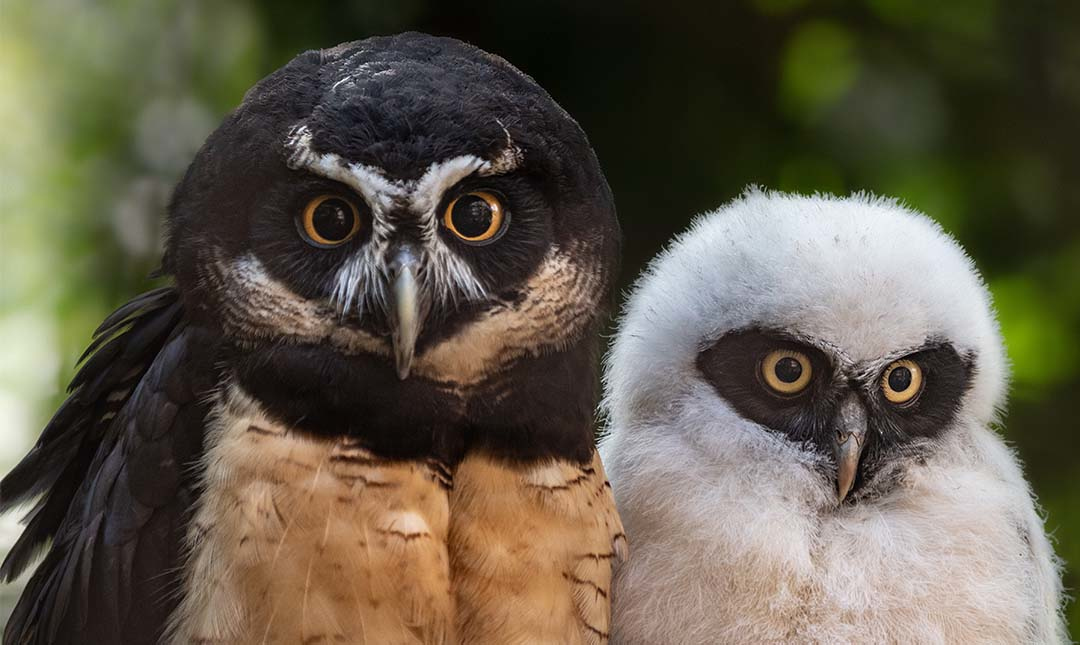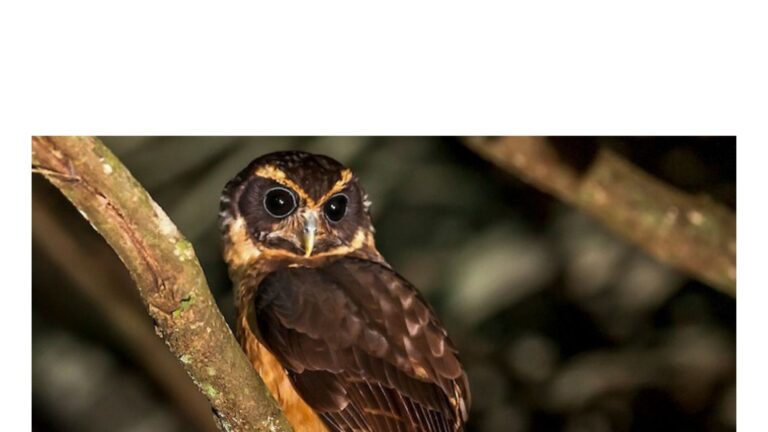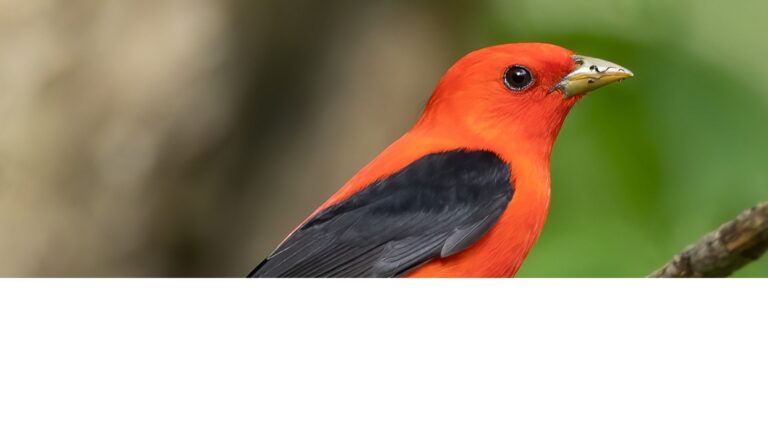Spectacled Owl: Insights into Its Habitat and Behavior
The Spectacled Owl, or Pulsatrix perspicillata, is a striking large tropical owl known for its unique appearance and nocturnal habits.
This species is often found in humid lowland forests across Central and South America, where it plays a vital role in the ecosystem.
Its distinctive facial markings resemble glasses, giving it its name and making it easily recognizable among owl enthusiasts.
These owls are primarily nocturnal hunters, preying on small mammals and birds.
Their hunting behavior is fascinating, as they utilize their excellent hearing and silent flight to catch prey in the dark.
Despite their widespread habitat, the Spectacled Owl faces challenges due to habitat loss and environmental changes, impacting their conservation status.
Understanding the Spectacled Owl’s ecology and threats is essential to ensuring its survival.
With their beauty and role in nature, these owls capture the interest of wildlife lovers and researchers alike, making them a key species worthy of study and protection.
Key Takeaways
- The Spectacled Owl is recognized by its distinct facial markings.
- It primarily hunts small prey in humid forest environments.
- Habitat loss poses significant risks to its survival in the wild.
Species Identification
This section covers the key aspects of identifying the Spectacled Owl, including its physical characteristics and the taxonomy that defines its subspecies.
Physical Characteristics
The Spectacled Owl, scientifically known as Pulsatrix perspicillata, is recognized for its distinct appearance.
- Facial Disc: It has a chocolate brown facial disc that contrasts sharply with its white facial markings.
- Body Color: The plumage is generally dark brown with lighter streaks and a buff-colored belly.
- Eyes: Large, yellow eyes enhance its unique look and help with nocturnal hunting.
- Size: This owl can reach up to 50 cm in length, making it one of the larger species in its family.
These features not only help in visual identification but also aid in differentiating it from similar owl species.
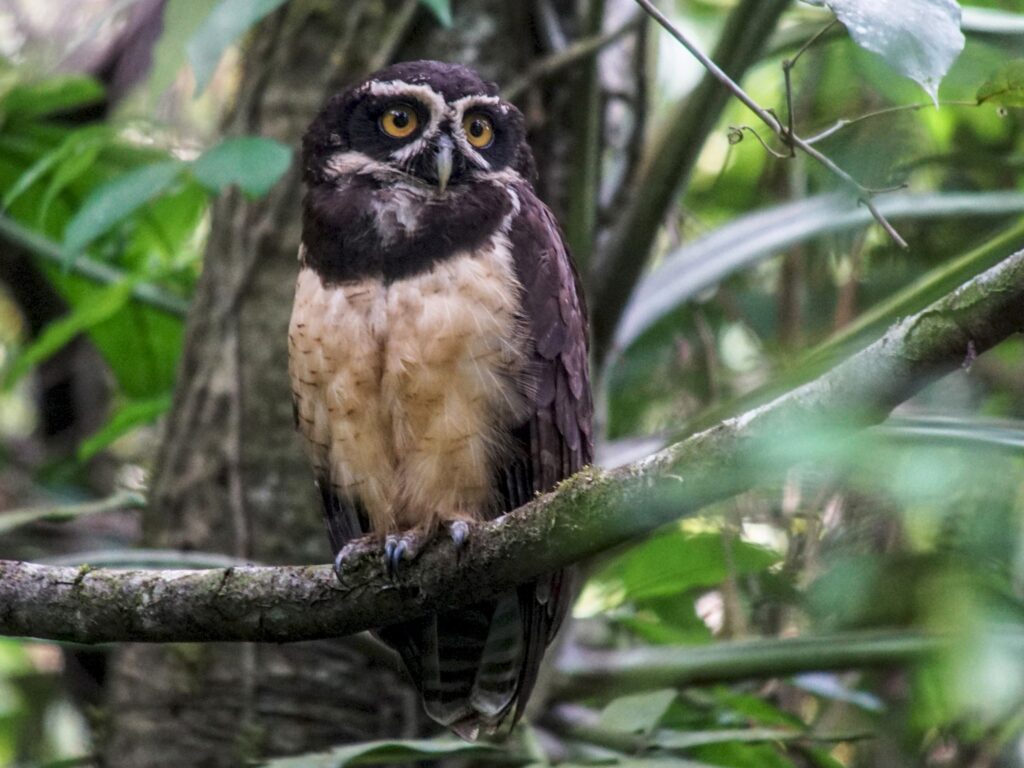
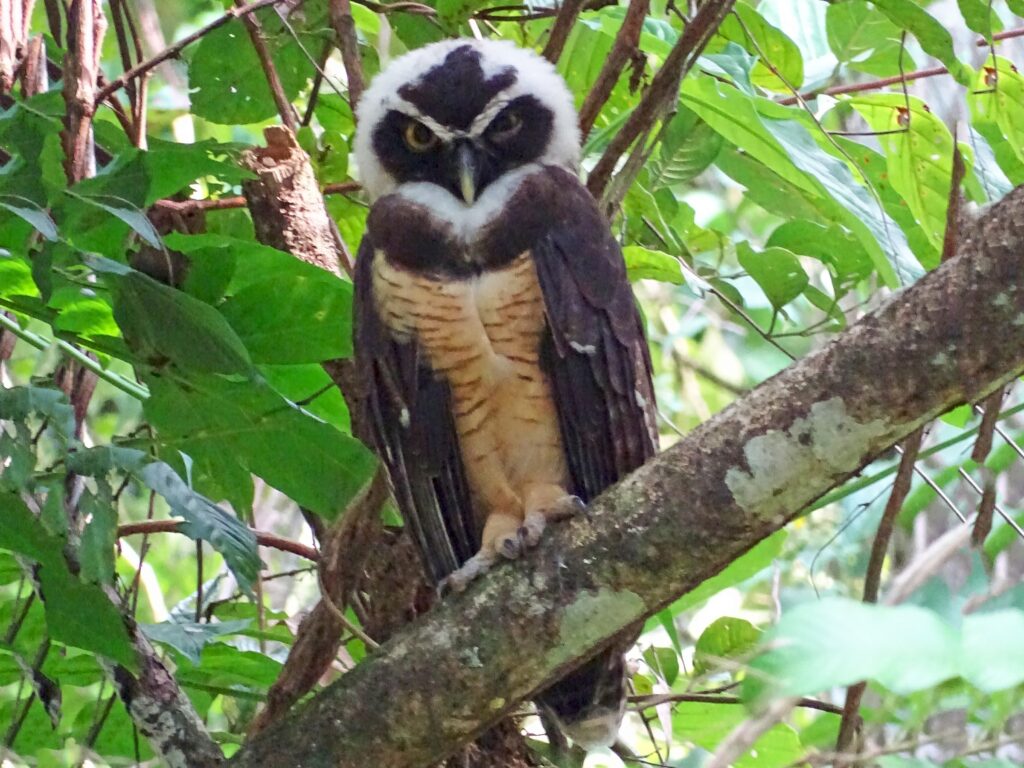
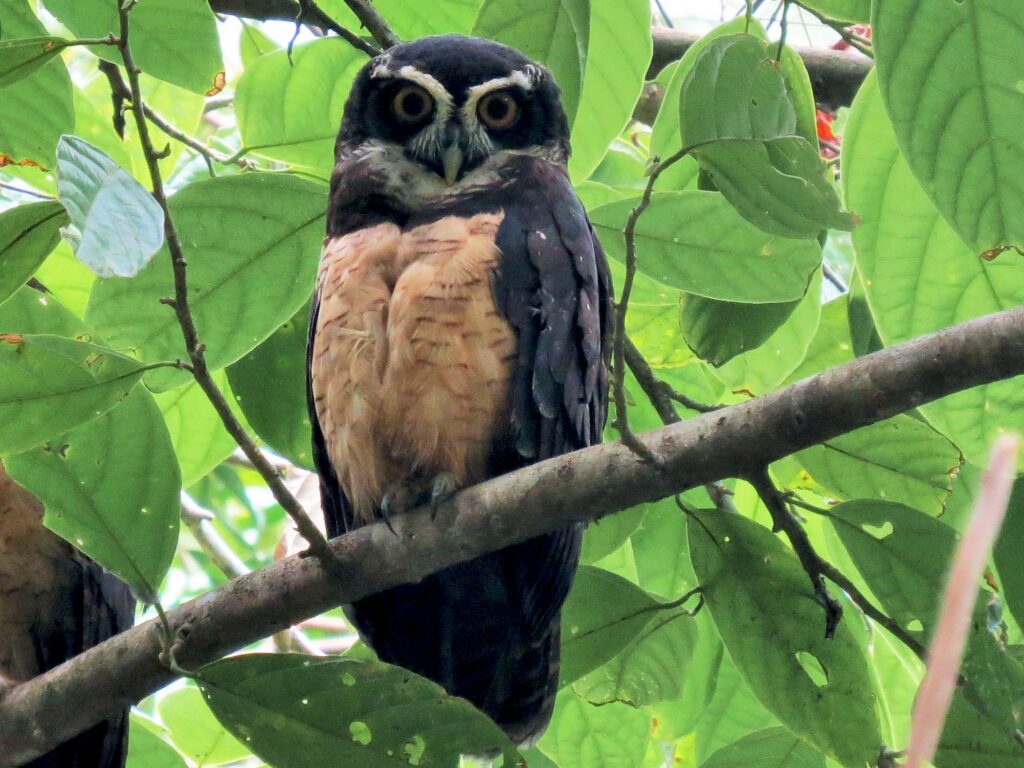
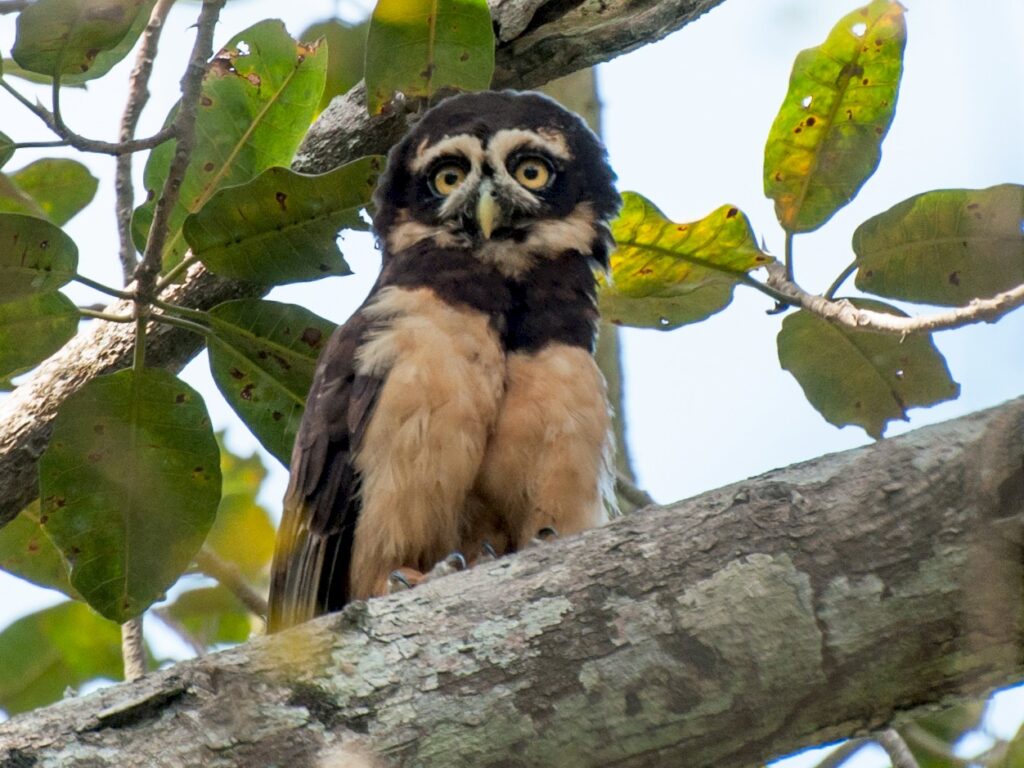
Taxonomy and Subspecies
The Spectacled Owl belongs to the family Strigidae and is classified under the genus Pulsatrix.
It has several subspecies, with variations primarily in size and color. For example:
- P. p. perspicillata is the nominal subspecies found in Central America.
- P. p. fuscata, located in the Amazon basin, tends to be darker in color.
These subspecies variations highlight regional adaptations and help ornithologists in studies of distribution and ecology. The taxonomy is crucial for conservation efforts, as identifying subspecies can inform targeted protection strategies.
Habitat and Distribution
The Spectacled Owl thrives in specific environments across its geographic range. Its habitat preferences are closely tied to various forest types and edges, influencing its distribution in Central and South America.
Geographic Range
The Spectacled Owl is found in a wide range that includes southern Mexico, Central America, and parts of South America. Its distribution extends into southern Brazil and northwestern Argentina. This owl also inhabits the island of Trinidad.
The bird typically prefers areas where there are dense forests, as well as forest edges and clearings.
This geographic range reflects the species’ adaptability to different habitats, though it often remains in regions with abundant tree cover.
Habitat Preferences
This tropical owl prefers a mix of habitats, including dry forests and plantations.
It often resides near forest edges, which provide better opportunities for hunting.
The owl typically favors areas with mature trees that offer nesting sites and sufficient prey availability. Clearings can also serve as important foraging grounds.
The combination of these habitat features is essential for the species’ survival, as it relies on the availability of insects, small mammals, and birds for food.
Thus, maintaining diverse habitats is crucial for the conservation of the Spectacled Owl.
Feeding Behavior
The feeding behavior of the Spectacled Owl reveals its role in the ecosystem as a nocturnal predator. This owl primarily preys on various small mammals, insects, and amphibians, showcasing adaptive hunting strategies tailored to its environment.
Diet
The diet of the Spectacled Owl mainly consists of small mammals such as rodents, opossums, and skunks.
It also feeds on a variety of insects, including caterpillars, which are abundant in its habitat. Frogs are another common food source, particularly in areas near bodies of water.
In addition to these, the owl has been observed consuming birds.
Its diverse diet reflects the adaptability of the Spectacled Owl to different environments and food availability. This owl’s eating habits support local ecosystems by helping control populations of various species.
Hunting Strategies
Spectacled Owls employ stealth and keen senses while hunting.
They are primarily nocturnal, allowing them to take advantage of low light to catch their prey off guard.
With a remarkable sense of hearing, these owls can detect the movements of small mammals and insects in the underbrush.
Hunting typically occurs from a roosting spot, where they can survey their surroundings.
Once they identify potential prey, they swoop down silently to capture it.
This hunting technique is efficient and helps them secure the necessary nutrients for survival.
Their ability to adapt to different hunting scenarios is key to their success in various habitats.
Reproduction and Lifecycle
The Spectacled Owl has a unique reproductive cycle and lifecycle. Their nesting habits and chick development are critical to understanding their survival and growth.
Nesting and Incubation
Spectacled Owls are resident breeders, meaning they typically remain in the same area year-round to breed.
They often choose tree cavities or abandoned nests from other birds for nesting. The female lays usually 1-2 eggs, which are incubated for about 30-32 days.
During incubation, the female primarily stays in the nest, while the male provides food.
The male often hunts small mammals, insects, and birds to feed the female. This cooperation in care helps ensure the eggs develop successfully.
Nesting sites are crucial for protecting the young from predators and harsh weather. The choice of nesting location impacts the survival rates of the chicks.
Chick Development and Fledging
Once hatched, the chicks are altricial, meaning they are initially helpless and depend on their parents for food and warmth.
The chicks grow quickly, developing feathers and gaining strength within a few weeks.
At around 6-8 weeks old, the chicks start to exercise their wings in the nest. They usually fledge when they are about 10-11 weeks old. Fledging marks the transition from life in the nest to independence.
After leaving the nest, the young owls often stay near their parents for a while, learning to hunt and survive.
The parent’s continued support is vital during this transition period, helping the chicks adapt to life outside the nest.
Conservation Status
The Spectacled Owl (Pulsatrix perspicillata) faces various threats across its range. While this species is not currently listed as endangered, habitat loss poses a significant risk.
In areas like Panama and Costa Rica, deforestation for agriculture and urban development reduces available habitat. These changes can limit their nesting sites and food sources.
Paraguay also presents challenges. The expansion of agriculture has led to the destruction of native forests, affecting the owl’s population.
Recent studies indicate that conservation efforts are needed to maintain healthy populations.
The need for protected areas is crucial. These areas can ensure that owls have safe habitats to thrive.
Some local conservation projects focus on monitoring owl populations and educating communities about their importance. Engaging local people helps to implement successful conservation strategies.
In urban settings, such as in recent findings, Spectacled Owls have adapted to living near human activities.
They have been spotted in urban parks and forests, showing resilience despite habitat changes.
Long-term studies will help assess the effectiveness of these conservation actions.
Continuous research is vital to track the health of Spectacled Owl populations in different regions.
Frequently Asked Questions
Spectacled owls are fascinating creatures with unique traits and behaviors. Their diet, habitat, physical appearance, and communication methods all contribute to their life in the wild.
What does the spectacled owl’s diet consist of?
Spectacled owls primarily feed on small mammals, such as rodents and bats. They are also known to eat birds and insects, depending on their habitat and availability of food sources.
What habitats are typically occupied by spectacled owls?
These owls are often found in lowland tropical rainforests. They prefer dense forests with tall trees that provide ample nesting sites and cover for hunting.
What unique adaptations help spectacled owls survive in their environment?
Spectacled owls have excellent night vision, which allows them to hunt in low light. Their silent flight, thanks to specialized wing feathers, helps them approach prey without being detected.
Can you describe the physical characteristics of the spectacled owl?
Spectacled owls have striking facial markings, resembling glasses that give them their name. They have dark brown feathers with lighter underparts, and their large eyes are adapted for nocturnal activity.
How does the spectacled owl communicate, and what sounds does it make?
These owls communicate with a variety of hoots and calls. Their typical call is a deep, loud hoot that can be heard at night, which serves to establish territory and attract mates.
What are some interesting facts about the behavior of spectacled owls?
Spectacled owls are primarily solitary. They may be seen in pairs during breeding season. They roost in high trees during the day. At night, they become active hunters, showcasing their nocturnal nature.
